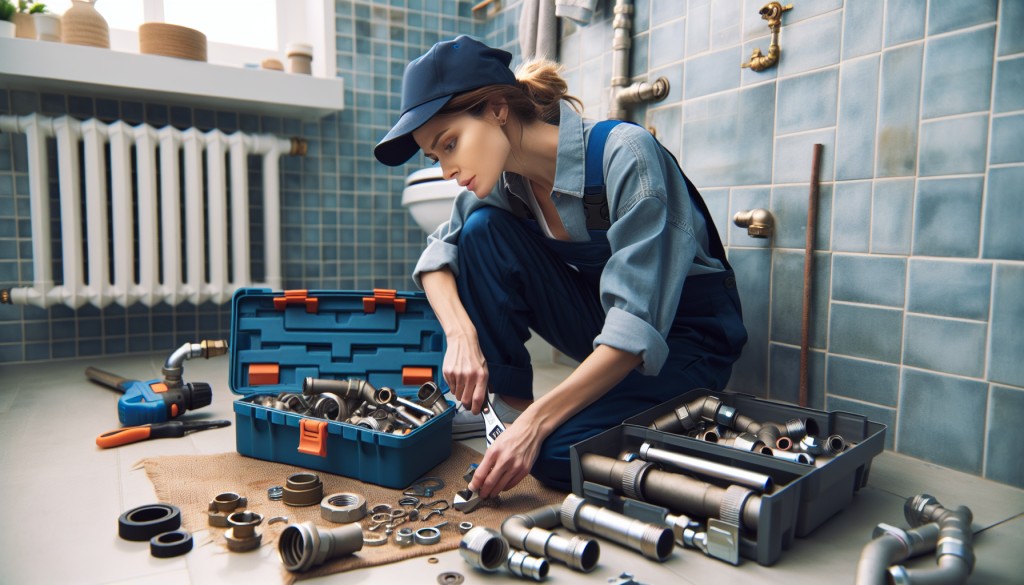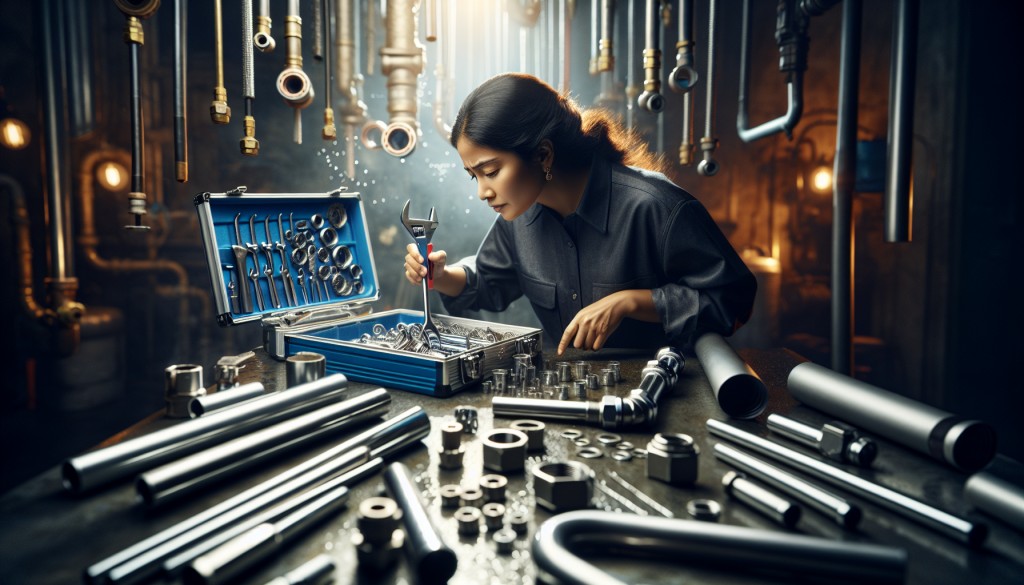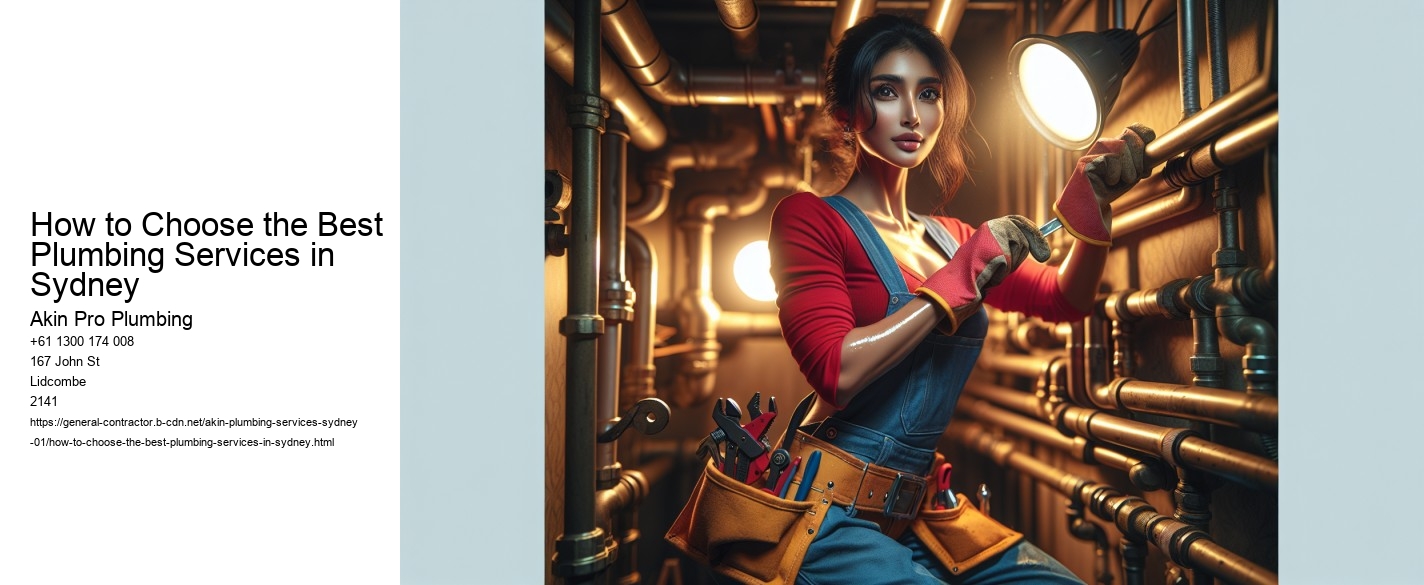Check for Licensing and Certifications
When it comes to choosing the best plumbing services in Sydney, one of the most crucial aspects to consider is the licensing and certification of the professionals you are planning to hire. plumbing services sydney . Plumbing is an intricate field that requires a high level of skill and expertise, and ensuring that your plumber is properly licensed and certified is a key step in guaranteeing quality work and peace of mind.
Firstly, licensing is a fundamental requirement for any plumber operating in Sydney. The state of New South Wales mandates that all plumbers hold a valid license to perform plumbing work legally. This licensing process ensures that the plumber has undergone the necessary training and possesses the knowledge needed to tackle various plumbing issues safely and effectively. A licensed plumber is also more likely to be familiar with the local building codes and regulations, ensuring that their work complies with the necessary legal standards.
In addition to a basic plumbing license, certifications can further distinguish a plumbers expertise and specialization. Certifications are often awarded by industry bodies and can indicate a plumber's proficiency in specific areas, such as gas fitting, drainage, or green plumbing technologies. When a plumber holds such certifications, it demonstrates a commitment to their craft and an ongoing pursuit of professional development. Plumbing & Drainage Institute This can be particularly important if you have specialized plumbing needs, as a certified plumber will likely have the advanced skills required to address your specific situation.
Furthermore, verifying a plumber's licensing and certifications can protect you as a consumer. Licensed and certified professionals are typically required to hold insurance, which means that in the unlikely event that something goes wrong, any damages or issues can be covered without additional cost to you. This insurance is a safeguard that provides peace of mind, knowing that you are protected against unforeseen circumstances.
In conclusion, checking for licensing and certifications is an essential step in choosing the best plumbing services in Sydney. It not only ensures that the plumber is qualified and competent but also provides a layer of protection for you as a homeowner.
How to Choose the Best Plumbing Services in Sydney - Tubing
- Pipe wrench
- Plumbing fixture
- Nipple (plumbing)
- Drain (plumbing)
- pipe wrench

Inquire About Insurance Coverage
Choosing the best plumbing services in Sydney requires careful consideration of several factors, with insurance coverage being one of the most critical. Understanding and inquiring about insurance coverage can protect you from unforeseen liabilities and ensure that the plumbing work is conducted professionally and safely. Here, we will explore why this aspect is essential and how it can guide you in selecting the right plumbing service provider.
When searching for plumbing services, many people focus on cost, experience, and reputation. While these are important, insurance coverage is equally vital. Insurance provides a safety net for both the homeowner and the plumber. There are primarily two types of insurance you should inquire about: liability insurance and workers compensation.
Liability insurance is crucial because it covers any damages or accidents that may occur during the plumbing work. Imagine a scenario where a plumber accidentally causes water damage to your property. Without liability insurance, you might have to bear the repair costs yourself. Thus, confirming that your plumber has adequate liability insurance can save you from potential financial burdens.
Workers compensation insurance is another essential aspect. Sink This type of insurance covers the medical expenses and lost wages if a plumber is injured while working on your property. Without this insurance, you might be held responsible for these costs. Ensuring that the plumbing service you choose provides workers compensation insurance protects you from this risk.

When inquiring about insurance coverage, ask the plumbing company for proof of insurance. A reputable company will be more than willing to provide documentation. Verify the insurance details with the insurance provider to ensure that the policy is current and covers the scope of work to be performed. This step not only provides peace of mind but also indicates that the plumbing service operates with professionalism and accountability.
In addition to insurance, consider other factors like the company's experience, customer reviews, and service guarantees. A well-rounded approach to selecting plumbing services will help ensure that you receive high-quality work and excellent customer service.
In conclusion, inquiring about insurance coverage is a crucial step in choosing the best plumbing services in Sydney. By ensuring that the company you hire has both liability and workers compensation insurance, you protect yourself from potential financial and legal troubles. This due diligence, combined with evaluating other factors, will help you make an informed decision and ensure that your plumbing needs are met efficiently and safely.

Compare Pricing and Quotes
When it comes to maintaining a comfortable and functional home, plumbing services play an essential role. Whether its a leaky faucet, a blocked drain, or a complete bathroom renovation, choosing the right plumbing service can significantly impact the outcome of your project. For residents of Sydney, a city known for its dynamic lifestyle and diverse homes, selecting the best plumbing services requires careful consideration, particularly when it comes to comparing pricing and quotes.
History of water supply and sanitation
The first step in choosing a plumbing service is to understand the scope of the work required. Different plumbing tasks vary in complexity and scale, which in turn affects the pricing. For instance, fixing a simple leak may be relatively inexpensive, while replacing a sewer line or installing a new water heater could be significantly more costly. Once you have a clear understanding of the work needed, you can begin gathering quotes from various plumbing services.
When comparing pricing, its essential to obtain detailed quotes from at least three to five plumbing companies. These quotes should break down the costs involved, including labor, materials, and any additional fees. By doing so, you can ensure that you are comparing apples to apples. If a quote seems unusually low, it might be a red flag indicating subpar materials or inexperienced labor. Conversely, a quote that is significantly higher than others should also be scrutinized to understand what additional value is being offered.
Another critical factor in choosing the best plumbing services is to consider the reputation and reliability of the company. Price alone should not be the sole determinant. Researching customer reviews and ratings can provide insights into the companys customer service, punctuality, and quality of work. Trusted review platforms and word-of-mouth recommendations from friends and family can be invaluable in this regard.
Moreover, its important to verify the credentials of the plumbing service. In Sydney, plumbers are required to be licensed and insured, ensuring they meet the necessary industry standards. This not only safeguards the quality of the work but also protects you from any liabilities in case of accidents or damages during the job.
Lastly, consider the level of customer service provided by the plumbing company. A company that is willing to answer your questions, provide detailed explanations, and offer a satisfaction guarantee is likely to deliver a better overall experience. Communication is key, and a company that prioritizes clear and open dialogue with its clients is usually a good choice.
In conclusion, choosing the best plumbing services in Sydney involves a balance of competitive pricing, company reputation, and quality assurance. By thoroughly comparing quotes, verifying credentials, and considering customer feedback, you can make an informed decision that ensures your plumbing needs are met efficiently and effectively. Whether youre addressing a minor repair or embarking on a major project, taking the time to select the right plumbing service will pay off in the long run, providing peace of mind and a well-functioning home.
Evaluate Customer Service and Communication Skills
Choosing the best plumbing services in Sydney requires a thoughtful evaluation of customer service and communication skills, as these elements are crucial in ensuring a smooth and satisfactory experience. In a bustling city like Sydney, where options are abundant, understanding the importance of these aspects can greatly aid in making an informed decision.
Firstly, outstanding customer service reflects a plumbing companys commitment to client satisfaction. When evaluating a plumbing service, consider how they handle inquiries and the professionalism they exhibit. A company that values customer service will be responsive and courteous, providing clear information about their services, pricing, and availability. This initial interaction sets the tone for what clients can expect throughout their engagement with the company.
Moreover, effective communication skills are vital in the plumbing industry due to the technical nature of the services provided. A reliable plumbing service should be able to clearly explain the problem, the necessary repairs, and the costs involved. This transparency not only builds trust but also empowers customers to make informed decisions about the services they require. Additionally, skilled communicators will listen attentively to their clients' concerns and address any questions or doubts, ensuring that customers feel heard and valued.
Another key aspect of evaluating communication is how well the plumbing service manages expectations. Timely updates about the progress of the work, any unforeseen issues, or changes in pricing are essential to maintaining a positive relationship with clients. A company that proactively communicates these aspects demonstrates reliability and a customer-centric approach, which are crucial for long-term success in the service industry.
Furthermore, the ability to handle complaints and resolve issues amicably is a hallmark of excellent customer service. When problems arise, as they sometimes do, the manner in which a plumbing service addresses them can significantly impact the overall customer experience. A company that prioritizes resolving issues quickly and satisfactorily will likely foster customer loyalty and generate positive word-of-mouth referrals.
In conclusion, when choosing the best plumbing services in Sydney, it is essential to evaluate their customer service and communication skills. These attributes are indicative of a companys professionalism and dedication to client satisfaction. By prioritizing businesses that excel in these areas, customers can ensure that they receive not only high-quality plumbing solutions but also a seamless and stress-free service experience.







